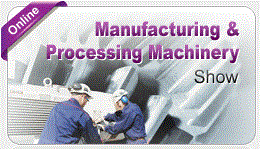Machine Vision Makes Industrial Robots See and Improve
- gtbmsbcs
- 2018年3月15日
- 讀畢需時 3 分鐘
Industrial robot designers are under constant pressure to improve productivity and efficiency. In response, they are turning to emerging technologies such as CV and 3D video capture. Such capabilities promise to revolutionize industrial automation, but require new system architectures that provide more performance and connectivity than their predecessors while also remaining reliable and compact.
3D machine vision technology allows industrial robots to optimize grip and adjust strength based on images captured and analyzed in real time. As a result, robots can move parts and assemblies with greater flexibility and accuracy.
But while "seeing" robots significantly raise productivity levels, they also come with considerable design challenges. These include:
Vision-guided robots require additional camera hardware and high-bandwidth I/O and interfaces to connect 3D cameras to compute systems.
The ability to function in space-constrained and rugged environments.
Substantial performance for executing deep learning algorithms used for real-time image processing.
These requirements call for a combination of high-throughput, low-power computing in a compact form factor, as well as reliability features such as wide operating temperature ranges, smart circuit protection, and vibration dampening.
Delivering these capabilities often requires multiple compute platforms, which adds cost and system complexity. Now OEMs provide integrated solutions that minimize both.
Machine Vision Plus Motion Control
Vecow, a developer of machine vision and imaging solutions, was tasked with designing a workstation-grade system for a vision-based industrial robotics platform. Traditionally, such designs required use of two embedded systems – one for 3D video capture and one for machine control.
But limited space demanded a compact but powerful compute system. Therefore, Vecow chose to base its design on the server-grade Intel® Xeon® processor E3-1275 v6, which permitted video capture and motion control functions to be integrated in a single platform, the RCS-9000F GTX1080

The RCS-9000 provides the ability to process real-time video capture, deep learning, motion control, and other robotics workloads in an industrial-grade package that offers enterprise-class performance. It can handle up to 16 3D cameras simultaneously for machine vision-enabled video capture from manufacturing robots.
According to Vecow, the key reason for going with the Xeon processor E3-1275 v6 is that it offers a 7 percent higher base frequency than the other Skylake-S and Kaby Lake-S architecture processors. A frequency scaling technology, known as Enhanced Intel SpeedStep® (EIST), allows the clock speed of the processor to be dynamically changed in software. That, in turn, enables the processor to meet instantaneous power demands while minimizing power consumption and heat generation.
The E3-1275 processor's integrated Intel® HD graphics P630 technology was another key design consideration for supporting real-time 3D video capture in a power-efficient manner (Figure 2). The graphics engine allows the Xeon processor to deliver 10-bit High Efficiency Video Coding (HEVC) hardware acceleration, which enhances 4K video encoding and decoding operations.

Vecow claims that the RCS-9000F GTX1080 is the first machine vision solution that combines a flexible CPU socket with high-end graphics for creating vision-enabled industrial robots. The additional graphics engine also allows the system to run 3D video capture and analysis operations simultaneously.
Besides enhanced CPU and graphics, DDR4 error correcting code (ECC) memory in configurations of up to 64 GB at 2,400 MHz ensures reliability of the system by avoiding memory errors. This is complemented by the RCS-9000F's fanless design and EN 50155 and EN 50121-3-2 anti-shock and anti-vibration certifications, which enhance reliability in factory environments.
The RCS-9000F is specified for operation over a -13ºF to 140ºF temperature range, while also featuring 80 V surge protection.
All-in-One Interface
When it comes to 3D video operations for mission-critical applications like manufacturing robots, it’s far more efficient if tasks can be performed in parallel. Therefore, Vecow’s RCS-9000F GTX1080 compute solution provides USB 3.0 and PCIe slots for video capture and data analytics, respectively.
The industrial-grade compute system controls robots via multiple gigabit Ethernet (GbE) LAN connections, thanks to integrated i219LM and i210 Ethernet controllers. These high-speed GbE links support up to 16 cameras for machine vision-related tasks, and enable robot-to-robot connectivity.
Additional PCIe expansion slots can also be used to integrate add-on equipment that further supports deep learning and machine vision tasks. As multiple I/O connections are crucial for facilitating high-resolution data transport and sharp video analytics, this all-in-one platform provides ample interface options for any type of operation.
From Automated to Autonomous
Advanced CV and connectivity technologies are transforming relatively simple industrial robots from isolated systems to members of far more complex automation workflows. But taking advantage of these capabilities demands highly integrated compute platforms that allow each robot to capture, analyze, and act on video data more quickly, precisely, and consistently. This is key to machines becoming increasingly automated and autonomous.
Integration of industrial data with CV systems is consistent with larger trends in the Industrial IoT, such as machine learning and data analytics. Platforms like the RCS-9000F GTX1080 let industrial robots play their role in this ongoing industrial revolution.
Source: insight.tech








留言